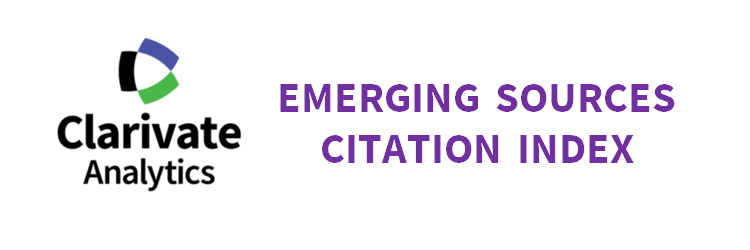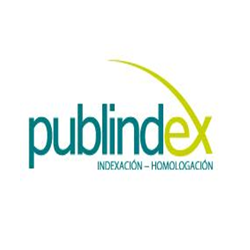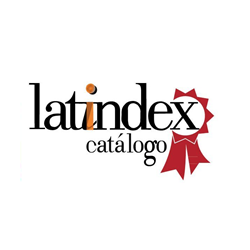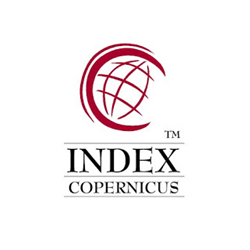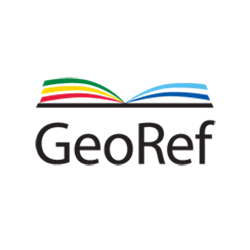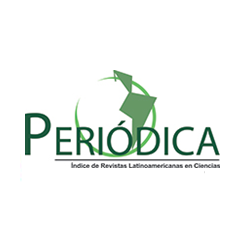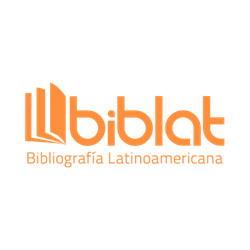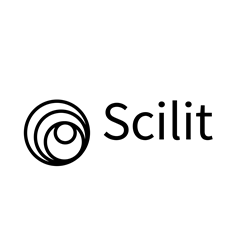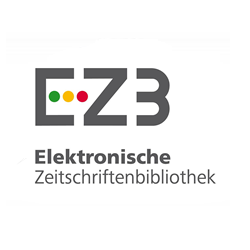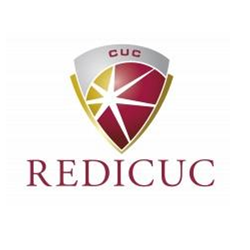Waste valorization of starch obtained from hawthorn yam as bioadsorbent on Chromium (VI) and Nickel (II) removal
DOI:
https://doi.org/10.17981/ingecuc.16.1.2020.02Keywords:
kinetics, dioscorea rotundata, adsorption isotherms, surface response methodology, optimizationAbstract
Introduction: Among the heavy metals discharged on water sources the Chromium (VI) and Nickel (II) cause dangerous health effects.
Objective: Optimize the effect of the initial concentration of pollutant, temperature and adsorbent dose using residues of the starch obtaining process from hawthorn yam (D.rotundata) in the removal of Chromium (VI) and Nickel (II).
Method: The optimization was carried out by applying the Response Surface Methodology (RSM), performing the kinetic and equilibrium study to the optimal condition found, evaluating the fit of the kinetic data to the pseudo-first-order, pseudo-second-order, and Elovich models; those of isotherms to the models of Langmuir and Freundlich. The thermodynamic parameters: Gibbs free Energy (ΔG°), Enthalpy (ΔH°) and Entropy (ΔS°), were calculated using the Van't Hoff graphical method.
Results: From the MSR it was found that the optimal conditions for Cr (VI) were 76.6 ° C, 0.14 g and 368.18 ppm, and for Ni (II) 70 °C, 1.19 g and 31.82 ppm. The maximum adsorption capacity was 66.25 mg/g Cr (VI) and 17.67 mg/g Ni (II). The pseudo-second-order kinetic model adjusts the adsorption data of Cr (VI) and that of Elovich adjusts the Ni (II) data; on the other hand, the Freundlich isotherm model showed the best adjustment of the adsorption data of the ions under study. The values of ΔG°, ΔS°, and ΔH° established that the process for Cr (VI) is endothermic, not spontaneous, not favorable and reversible; for Ni (II) which is non-spontaneous, exothermic and controlled by physisorption.
Conclusions: The residues of the hawthorn yam starch extraction process are an effective adsorbent for the removal of Cr (VI) and Ni (II) present in aqueous solution and the MSR yielded optimal values that serve as the basis for the scalability of the process.
Downloads
References
A. Haq, M. Saeed, S. Anjum, T. H. Bokhari, M. Usman and S. Tubbsum, “Evaluation of Sorption Mechanism of Pb ( II ) and Ni ( II ) onto Pea ( Pisum sativum ) Peels,” J. Oleo Sci., vol. 66, no. 7, pp. 735–743, Jun. 2017. https://doi.org/10.5650/jos.ess17020
S. Ratan, I. Singh, J. Sarkar and N. Rm, “The Removal of Nickel from Waste Water by Modified Coconut Coir Pith,” Chem. Sci. J., vol. 7, no. 3, pp. 1–6, Jun. 2016. Available from https://www.hilarispublisher.com/open-access/the-removal-of-nickel-from-waste-water-by-modified-coconut-coir-pith-2150-3494-1000136.pdf
E. Ben, B. Rzig, R. Chakroun, H. Nouagui and B. Hamrouni, “Application of response surface methodology for chromium removal by adsorption on low-cost biosorbent,” Chemom. Intell. Lab. Syst., vol. 189, pp. 18–26, Jun. 2019. https://doi.org/10.1016/j.chemolab.2019.03.014
A. Villabona-Ortíz, C. Tejada-Tovar and R. Ortega-Toro, “Modelling of the adsorption kinetics of Chromium (VI) using waste biomaterials,” Rev. Mex. Ing. Química, vol. 19, no. 1, pp. 401–408, Jan. 2020. https://doi.org/10.24275/rmiq/IA650
A. Kumar et al., “Remediation techniques applied for aqueous system contaminated by toxic Chromium and Nickel ion,” Geol. Ecol. Landscapes, vol. 1, no. 2, pp. 143–153, Jun. 2017. https://doi.org/10.1080/24749508.2017.1332860
I. Enniya, L. Rghioui and A. Jourani, “Adsorption of hexavalent chromium in aqueous solution on activated carbon prepared from apple peels,” Sustain. Chem. Pharm., vol. 7, no. 1, pp. 9–16, Mar. 2018. https://doi.org/10.1016/j.scp.2017.11.003
A. Witek-Krowiak, K. Chojnacka, D. Podstawczyk, A. Dawiec and K. Pokomeda, “Application of response surface methodology and artificial neural network methods in modelling and optimization of biosorption process,” Bioresour. Technol., vol. 160, no. 1, pp. 150–160, May. 2014. https://doi.org/10.1016/j.biortech.2014.01.021
M. Manjuladevi, R. Anitha and S. Manonmani, “Kinetic study on adsorption of Cr (VI), Ni (II), Cd (II) and Pb (II) ions from aqueous solutions using activated carbon prepared from Cucumis melo peel,” Appl. Water Sci., vol. 8, no. 1, pp. 1–8, Feb. 2018. https://doi.org/10.1007/s13201-018-0674-1
S. Afroze and T. K. Sen, “A Review on Heavy Metal Ions and Dye Adsorption from Water by Agricultural Solid Waste Adsorbents,” Water, Air Soil Pollut., vol. 229, no. 7, p. 225, Jun. 2018. https://doi.org/10.1007/s11270-018-3869-z
Y. Wu, Y. Fan, M. Zhang, Z. Ming, S. Yang and A. Arkin, “Functionalized agricultural biomass as a low-cost adsorbent : Utilization of rice straw incorporated with amine groups for the adsorption of Cr ( VI ) and Ni ( II ) from single and binary systems,” Biochem. Eng. J., vol. 105, pp. 27–35, Jan. 2016. https://doi.org/10.1016/j.bej.2015.08.017
A. Razafsha, P. Ziarati and M. Moslehishad, “Removal of Heavy Metals from Oryza sativa Rice by Sour Lemon Peel as Bio-sorbent,” Biomed. Pharmacol. J., vol. 9, no. 2, pp. 543–553, Aug. 2016. https://doi.org/10.13005/bpj/971
Y. F. Lam, L. Yee, S. J. Chua, S. S. Lim and S. Gan, “Ecotoxicology and Environmental Safety Insights into the equilibrium , kinetic and thermodynamics of nickel removal by environmental friendly Lansium domesticum peel biosorbent,” Ecotoxicol. Environ. Saf., vol. 127, no. 1, pp. 61–70, May. 2016. https://doi.org/10.1016/j.ecoenv.2016.01.003
Y. Yi, J. Lv, Y. Liu and G. Wu, “Synthesis and application of modified Litchi peel for removal of hexavalent chromium from aqueous solutions,” J. Mol. Liq., vol. 225, pp. 28–33, Jan. 2017. https://doi.org/10.1016/j.molliq.2016.10.140
S. Kuppusamy, P. Thavamani, Y. B. Lee and R. Naidu, “Oak ( Quercus robur ) Acorn Peel as a Low-Cost Adsorbent for Hexavalent Chromium Removal from Aquatic Ecosystems and Industrial Effluents,” Water, Air, Soil Pollut., vol. 227, no. 2, pp. 1–11, Jan. 2016. https://doi.org/10.1007/s11270-016-2760-z
C. Tejada-Tovar, J. Gallo-Mercado, J. Moscote, A. Villabona-Ortíz and D. Acevedo-Correra, “Adsorción competitiva de plomo y niquel sobre cáscara de ñame y bagazo de palma en sistema continuo,” BSAA, vol. 16, no. 1, pp. 52–61, Ene. 2018. Disponible en https://revistas.unicauca.edu.co/index.php/biotecnologia/article/view/1145
R. E. Tejada-Tovar, L. P. Tejeda-Benítez, C. Tejada-Tovar, A. Villabona-Ortíz and C. Granados-Conde, “Aprovechamiento de ñame espino post-cosecha (Dioscorea rotundata P.) en la extracción de ácido láctico in the extraction of lactic acid,” Prospectiva, vol. 16, no. 1, pp. 76–82, Dic. 2018. https://doi.org/10.15665/rp.v16i1.1429
B. C. Maniglia and D. R. Tapia-Blácido, “Food Hydrocolloids Isolation and characterization of starch from babassu mesocarp,” vol. 55, pp. 47–55, Apr. 2016. https://doi.org/10.1016/j.foodhyd.2015.11.001
C. Tejada-Tovar, A. Villabona-Ortíz, Á. D. González-Delgado, C. Granados-Conde and M. Jiménez-Villadiego, “Kinetics of Mercury and Nickel adsorption using chemically pretrated cocoa (Theobroma cacao) husk,” Trans. ASABE, vol. 62, no. 2, pp. 461–466, Jan. 2019. https://doi.org/10.13031/trans.13133
M. Iqbal, N. Iqbal, I. Ahmad, N. Ahmad and M. Zahid, “Response surface methodology application in optimization of cadmium adsorption by shoe waste: A good option of waste mitigation by waste,” Ecol. Eng., vol. 88, no. 1, pp. 265–275, Mar. 2016. https://doi.org/10.1016/j.ecoleng.2015.12.041
C. Tejada-Tovar, Á. Villabona-Ortiz and M. Jiménez-Villadiego, “Remoción de cromo hexavalente sobre residuos de cacao pretratados químicamente,” Rev. U.D.C.A Act. & Div. Cient., vol. 10, no. 1, pp. 139–147, Jun. 2017. https://doi.org/10.31910/rudca.v20.n1.2017.71
C. T. Tovar, Á. V. Ortiz and M. J. Villadiego, “Remoción de cromo hexavalente sobre residuos de cacao pretratados químicamente,” Rev. U.D.C.A Act. & Div. Cient., vol. 20, no. 1, pp. 139–147, Jun. 2017. https://doi.org/10.31910/rudca.v20.n1.2017.71
C. Tien and B. V. Ramarao, “On the significance and utility of the Lagergren model and the pseudo second-order model of batch adsorption,” Sep. Sci. Technol., vol. 52, no. 6, pp. 975–986, Dec. 2016. https://doi.org/10.1080/01496395.2016.1274327
Y. S. Ho and G. Mckay, “Pseudo-second order model for sorption processes,” Process Biochem., vol. 34, no. 5, pp. 451–465, Jul. 1999. https://doi.org/10.1016/S0032-9592(98)00112-5
W. Marimón-Bolívar, L. Tejeda-Benítez and A. P. Herrera, “Removal of mercury (II) from water using magnetic nanoparticles coated with amino organic ligands and yam peel biomass,” Environ. Nanotechnol. Monit. Manage, vol. 10, pp. 486–493, Dec. 2018. https://doi.org/10.1016/j.enmm.2018.10.001
C. Aharoni and F. C. Tompkins, “Kinetics of Adsorption and Desorption and the Elovich Equation,” Adv. Catal., vol. 21, pp. 1–49, 1970. https://doi.org/10.1016/S0360-0564(08)60563-5
I. Langmuir, “The constitution and fundamental properties of solids and liquids. Part I. Solids.,” J. Am. Chem. Soc., vol. 38, no. 11, pp. 2221–2295, Nov. 1916. https://doi.org/10.1021/ja02268a002
J. Skopp, “Derivation of the Freundlich Adsorption Isotherm from Kinetics,” J. Chem. Educ., vol. 86, no. 11, pp. 1341–1343, Nov. 2009. https://doi.org/10.1021/ed086p1341
D. L. Gómez, J. P. Rodríguez, J. A. Esteban and J. F. Betancur, “Coffee Pulp: A Sustainable Alternative Removal of Cr (VI) in Wastewaters. Processes,” Processes, vol. 7, no. 7, p. 1–12, Jul. 2019. https://doi.org/10.3390/pr7070403
S. Kulbir, W. S. Abdullahi and R. Chhotu, “Removal of Heavy Metals by Adsorption using Agricultural based Residue: A Review,” Res. J. Chem. Environ., vol. 22, no. 5, pp. 65–74, May. 2018. Available from https://worldresearchersassociations.com/Archives/RJCE/Vol(22)2018/May2018.aspx
A. Rodriguez, D. Lemos, Y. T. Trujillo, J. G. Amaya and L. D. Ramos, “Effectiveness of Biochar Obtained from Corncob for Immobilization of Lead in Contaminated Soil,” J. Heal. Polution, vol. 9, no. 23, pp. 1–10, Sept. 2019. https://doi.org/10.5696/2156-9614-9.23.190907
X. H. Vu et al., “Adsorption of Chromium (VI) onto Freshwater Snail Shell-Derived Biosorbent from Aqueous Solutions: Equilibrium , Kinetics , and Thermodynamics,” J. Chem., vol. 2019, no. 3, pp. 1–11, Sept. 2019. https://doi.org/10.1155/2019/3038103
S. M. Batagarawa and A. K. Ajibola, “Comparative evaluation for the adsorption of toxic heavy metals on to millet , corn and rice husks as adsorbents,” J. Anal. Pharm. Res., vol. 8, no. 3, pp. 119–125, May. 2019. https://doi.org/10.15406/japlr.2019.08.00325
S. M. Anisuzzaman, A. Bono, D. Krishnaiah and Y. Z. Tan, “A study on dynamic simulation of phenol adsorption in activated carbon packed bed column,” J. King Saud Univ.-Eng. Sci., vol. 28, no. 1, pp. 47–55, Jan. 2016. https://doi.org/10.1016/j.jksues.2014.01.001
Ch. Zhu et al., “Nitrogen-doped chitosan-Fe ( III ) composite as a dual-functional material for synergistically enhanced co-removal of Cu ( II ) and Cr ( VI ) based on adsorption and redox,” Chem. Eng. J., vol. 306, no. C, pp. 579–587, Dec. 2016. https://doi.org/10.1016/j.cej.2016.07.096
P. Ray, M. A. Sabri, T. H. Ibrahim, M. I. Khamis and F. H. Jumean, “Design and optimization of a batch sequential contactor for the removal of chromium ( VI ) from industrial wastewater using sheep wool as a low-cost adsorbent,” Desalin. Water Treat., vol. 113, pp. 109–113, May. 2018. https://doi.org/10.5004/dwt.2018.22365
K. M. Doke and E. M. Khan, “Equilibrium , kinetic and diffusion mechanism of Cr ( VI ) adsorption onto activated carbon derived from wood apple shell,” Arab. J. Chem., vol. 10, no. Supplement 1, pp. S252–S260, Feb. 2017. https://doi.org/10.1016/j.arabjc.2012.07.031
X. Hu, Y. Xue, L. Liu, Y. Zeng and L. Long, “Preparation and characterization of Na2S-modified biochar for nickel removal,” Environ. Sci. Pollut. Res., vol. 25, no. 10, pp. 9887–9895, Jan. 2018. https://doi.org/10.1007/s11356-018-1298-6
A. Ali, K. Saeed and F. Mabood, “Removal of chromium ( VI ) from aqueous medium using chemically modified banana peels as efficient low-cost adsorbent,” Alexandria Eng. J., vol. 55, no. 3, pp. 2933–2942, Sep. 2016. https://doi.org/10.1016/j.aej.2016.05.011
Z. N. Garba, N. I. Ugbaga and A. K. Abdullahi, “Evaluation of optimum adsorption conditions for Ni ( II ) and Cd ( II ) removal from aqueous solution by modified plantain peels ( MPP ),” Beni-Suef Univ. J. Basic Appl. Sci., vol. 5, no. 2, pp. 170–179, Jun. 2016. https://doi.org/10.1016/j.bjbas.2016.03.001
Z. Shen, Y. Zhang, O. McMillan, F. Jin and A. Al-Tabbaa, “Characteristics and mechanisms of nickel adsorption on biochars produced from wheat straw pellets and rice husk,” Environ. Sci. Pollut. Res., vol. 24, no. 14, pp. 12809–12819, Mar. 2017. https://doi.org/10.1007/s11356-017-8847-2
R. Sudha, K. Srinivasan and P. Premkumar, “Ecotoxicology and Environmental Safety Removal of nickel (II) from aqueous solution using Citrus Limettioides peel and seed carbon,” Ecotoxicol. Environ. Saf., vol. 117, pp. 115–123, Jul. 2015. https://doi.org/10.1016/j.ecoenv.2015.03.025
C. Lin, W. Luo, T. Luo, Q. Zhou, H. Li and L. Jing, “A study on adsorption of Cr (VI) by modified rice straw: Characteristics, performances and mechanism,” J. Clean. Prod., vol. 196, pp. 626–634, Sep. 2018. https://doi.org/10.1016/j.jclepro.2018.05.279
E. Rodrigues, O. Almeida, H. Brasil, D. Moraes and M. A. L. dos Reis, “Applied Clay Science Adsorption of chromium ( VI ) on hydrotalcite-hydroxyapatite material doped with carbon nanotubes : Equilibrium , kinetic and thermodynamic study,” Appl. Clay Sci., vol. 172, pp. 57–64, May. 2019. https://doi.org/10.1016/j.clay.2019.02.018
V. Manirethan, K. Raval, R. Rajan, H. Thaira and R. M. Balakrishnan, “Kinetic and thermodynamic studies on the adsorption of heavy metals from aqueous solution by melanin nanopigment obtained from marine source : Pseudomonas stutzeri,” J. Environ. Manage., vol. 214, pp. 315–324, May. 2018. https://doi.org/10.1016/j.jenvman.2018.02.084
S. Kar and S. Equeenuddin, “Adsorption of Hexavalent Chromium using Natural Goethite : Isotherm , Thermodynamic and Kinetic Study,” J. Geol. Soc. India, vol. 93, no. 3, pp. 285–292, Mar. 2019. https://doi.org/10.1007/s12594-019-1175-z
S. Alam et al., “Thermodynamic Analysis of Nickel (II) and Zinc (II) Adsorption to Biochar,” Environ. Sci., vol. 52, no. 11, pp. 6246–6255, May. 2018. https://doi.org/10.1021/acs.est.7b06261
X. Fan, J. Xia and J. Long, “The Potential of Nonliving Sargassum hemiphyllum as a Biosorbent for Nickel (II) Removal — Isotherm , Kinetics , and Thermodynamics Analysis,” Environ. Prog. Sustain. Energy, vol. 38, no. S1, pp. S250–S259, Oct. 2018. https://doi.org/10.1002/ep.12997
J. Long, X. Huang, X. Fan, Y. Peng and J. Xia, “Effective adsorption of nickel (II) with Ulva lactuca dried biomass: isotherms, kinetics and mechanisms,” Water Sci. Technol., vol. 78, no. 1, pp. 1–9, Jun. 2018. https://doi.org/10.2166/wst.2018.253
S. Rangabhashiyam and N. Selvaraju, “Adsorptive remediation of hexavalent chromium from synthetic wastewater by a natural and ZnCl2 activated Sterculia guttata shell,” J. Mol. Liq., vol. 207, pp. 39–49, Jul. 2015. https://doi.org/10.1016/j.molliq.2015.03.018
M. Mishra, J. Huang and M. K. Balasubramanian, “The yeast actin cytoskeleton,” FEMS Microbiol Rev., vol. 38, no. 2, pp. 213–217, Feb. 2014. https://doi.org/10.1111/1574-6976.12064
S. R. Irani et al., “Faciobrachial dystonic seizures precede Lgi1 antibody limbic encephalitis,” Ann Neurol., vol. 69, no. 5, pp. 892–900, May. 2011. https://doi.org/1002/ana.22307
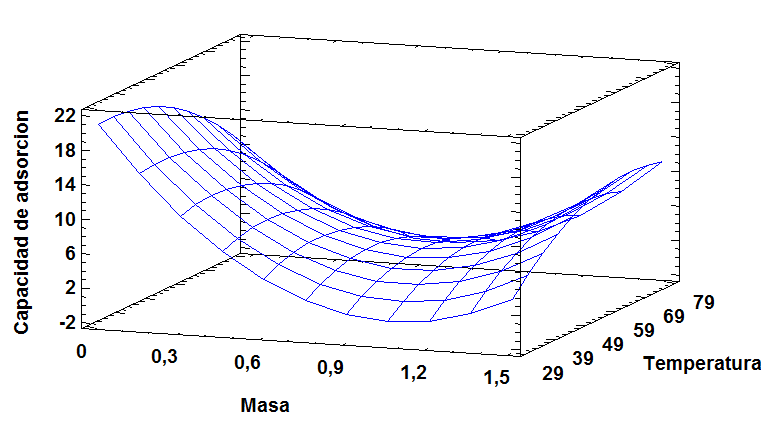
Published
How to Cite
Issue
Section
License
Copyright (c) 2020 INGE CUC

This work is licensed under a Creative Commons Attribution-NonCommercial-NoDerivatives 4.0 International License.
Published papers are the exclusive responsibility of their authors and do not necessary reflect the opinions of the editorial committee.
INGE CUC Journal respects the moral rights of its authors, whom must cede the editorial committee the patrimonial rights of the published material. In turn, the authors inform that the current work is unpublished and has not been previously published.
All articles are licensed under a Creative Commons Attribution-NonCommercial-NoDerivatives 4.0 International License.


 English
English
 Español (España)
Español (España)
